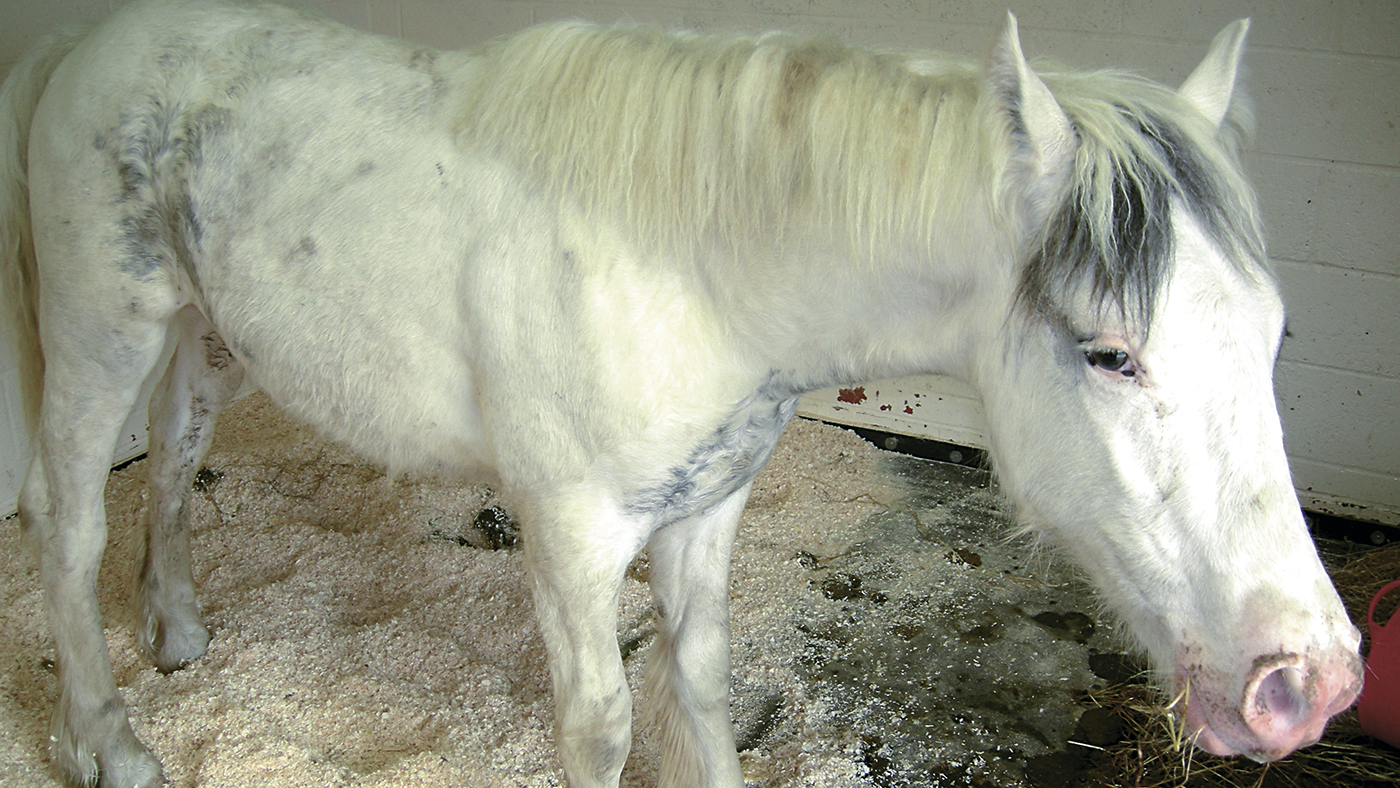
Tetanus is a neuromuscular disease that causes paralysis, rigidity and, often, death in horses. Toxins released from the bacteria clostridium tetani cause this highly infectious disease. The bacteria have a spore form which allows it to survive for many years in the soil; therefore, horses are frequently exposed to this infective form of the bacteria. Spores are deposited deep within tissues when a penetrating wound (to sole of hoof) or certain types of wounds (castration incisions, obstetrical trauma, bone fractures) occur and the bacteria can then grow. Infection through the umbilicus is possible in the newborn.
Signs of infection become obvious within several days to several weeks. Jaw movement becomes restricted; saliva drips from the mouth and attempts to drink may cause regurgitation of food and water from the nostrils. The third eyelid may prolapse. Paralysis & rigidity progresses to the face, neck, trunk, and legs. When this happens, the horse then stands with all four legs stiff in a characteristic “sawhorse stance”. Violent reactions to external stimuli and convulsions occur. Other signs can include profuse sweating, colic, difficulty in breathing; laminitis and pneumonia may develop secondarily.
After treatment has begun, signs may occur for up to 6 weeks & muscle spasms for weeks to months before recovery. Clinical signs, history of a recent wound, and a lack of current vaccination are diagnostic for tetanus. Large doses of antibiotics, usually penicillin and tetanus antitoxin are given to kill the bacteria and neutralize any toxin. If an infected wound is found, it should be immediately cleaned, debrided, and irrigated with disinfectant solutions. Supportive nursing care is essential; systemic tranquilizers, anti-inflammatory drugs, muscle relaxant agents and fluid therapy may all be employed.
Generally, about 80% of affected horses die; therefore, the prognosis is severely guarded or very grave. If death occurs, it is usually due to respiratory failure. Complications include laminitis and pneumonia. Tetanus toxoid should be given to all horses beginning at 3-4 months of age, with a booster shot again at 6 months and then be administered on an annual basis as part of a preventive health program. Brood mares should receive a tetanus booster during the last 4-6 weeks of pregnancy. Antitoxin should be given to foals at birth.
Provided by Dr. Lyda W. Denney, NYS Dept. of Agriculture & Markets, Division of Animal Industry, Albany, New York
Related Articles & Free Email Newsletter Sign Up
A Horses’ Tail is Much More Than Just a Flyswatter
A Steady Hand Makes for a Happier Horse
Do Not Allow Your Horse to Invade Your Space



Comment here